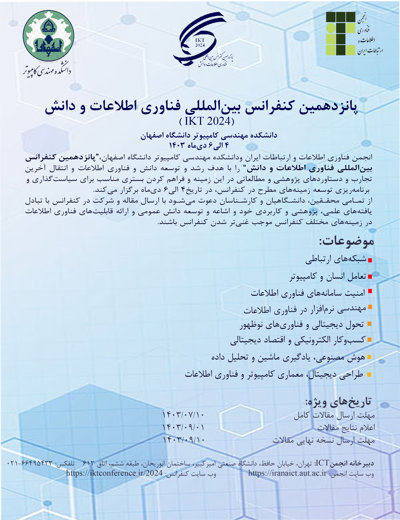0% Complete

نویسندگان :
کلمات کلیدی :
چکیده :
لیست مقالات بایگانی شده
علی روحانی فر - کمال میرزایی بدرآبادی
Sara Sinan Salman al-Abedi - Keyvan Mohebbi
Elaheh Jafari - Dr Bita Shams - Dr Saman Haratizadeh
مهراد قاضی پور - علیرضا رضوانیان
میترا اکبری کهنه شهری - دکتر رضا محمدی - دکتر محمد نصیری میترا اکبری کهنه شهری - رضا محمدی - محمد نصیری -
محمد قرشی - حسن حقیقی
سید عماد موسوی - مهرداد آشتیانی
Sara Adib - Bahman Zamani
Hamidreza Sadrarhami - S. Mohammadali Zanjani - Ghazanfar Shahgholian
Farzaneh Khajehgili-Mirabadi - Mohammad Reza Keyvanpour




